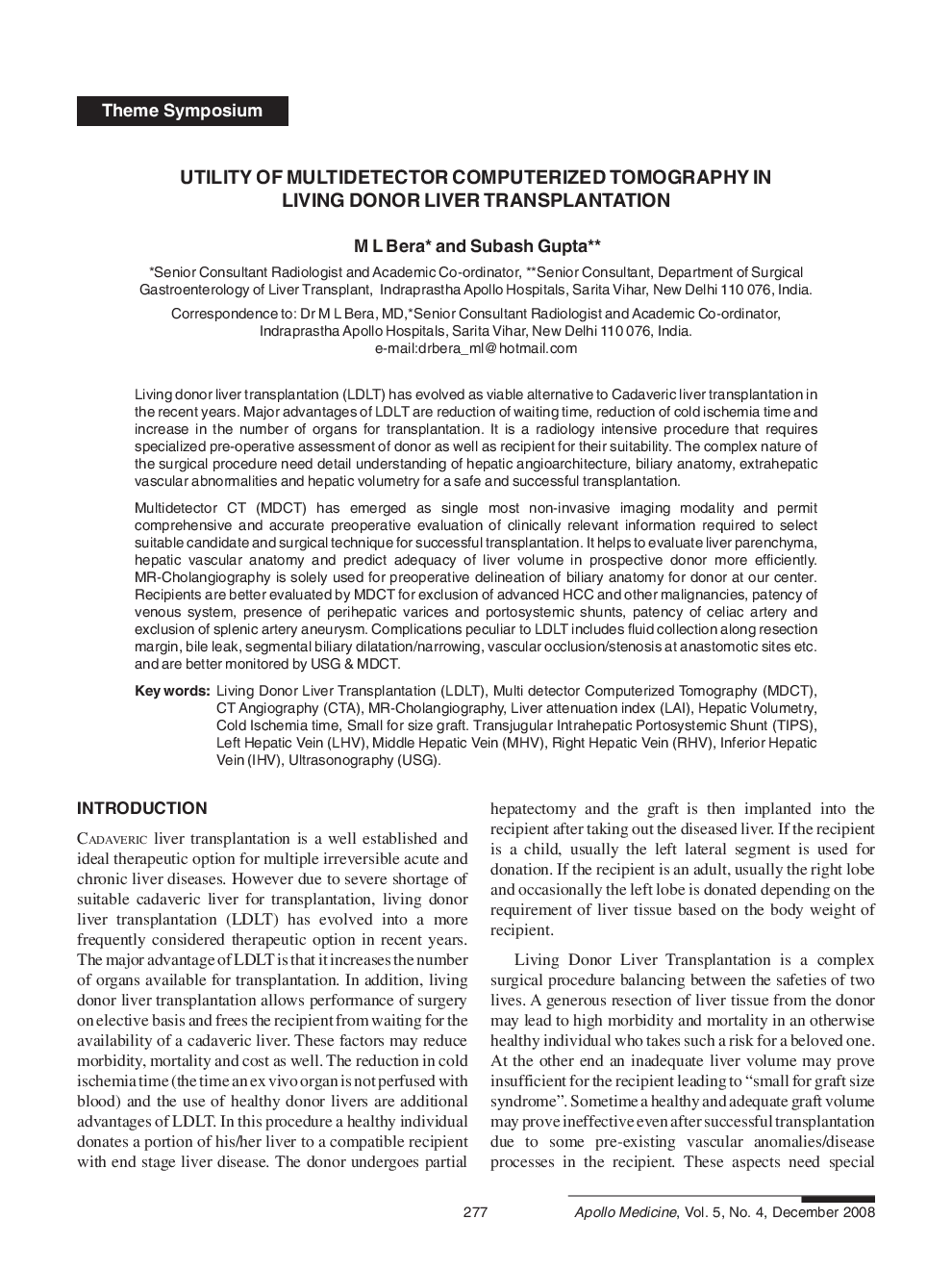| کد مقاله | کد نشریه | سال انتشار | مقاله انگلیسی | نسخه تمام متن |
|---|---|---|---|---|
| 3235173 | 1205442 | 2008 | 15 صفحه PDF | دانلود رایگان |

Living donor liver transplantation (LDLT) has evolved as viable alternative to Cadaveric liver transplantation in the recent years. Major advantages of LDLT are reduction of waiting time, reduction of cold ischemia time and increase in the number of organs for transplantation. It is a radiology intensive procedure that requires specialized pre-operative assessment of donor as well as recipient for their suitability. The complex nature of the surgical procedure need detail understanding of hepatic angioarchitecture, biliary anatomy, extrahepatic vascular abnormalities and hepatic volumetry for a safe and successful transplantation.Multidetector CT (MDCT) has emerged as single most non-invasive imaging modality and permit comprehensive and accurate preoperative evaluation of clinically relevant information required to select suitable candidate and surgical technique for successful transplantation. It helps to evaluate liver parenchyma, hepatic vascular anatomy and predict adequacy of liver volume in prospective donor more efficiently. MR-Cholangiography is solely used for preoperative delineation of biliary anatomy for donor at our center. Recipients are better evaluated by MDCT for exclusion of advanced HCC and other malignancies, patency of venous system, presence of perihepatic varices and portosystemic shunts, patency of celiac artery and exclusion of splenic artery aneurysm. Complications peculiar to LDLT includes fluid collection along resection margin, bile leak, segmental biliary dilatation/narrowing, vascular occlusion/stenosis at anastomotic sites etc. and are better monitored by USG & MDCT.
Journal: Apollo Medicine - Volume 5, Issue 4, December 2008, Pages 277-291